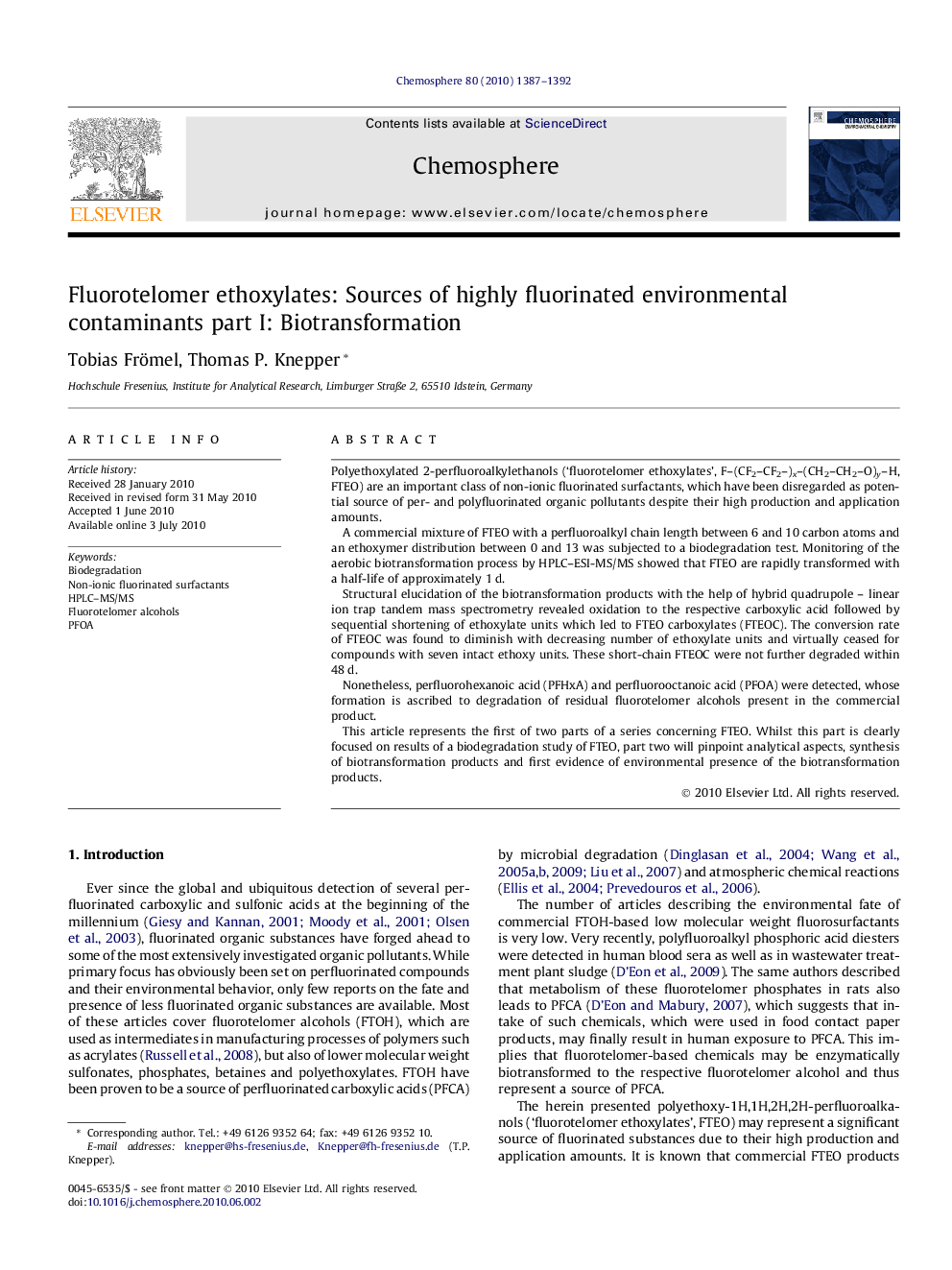| Article ID | Journal | Published Year | Pages | File Type |
|---|---|---|---|---|
| 4411438 | Chemosphere | 2010 | 6 Pages |
Polyethoxylated 2-perfluoroalkylethanols (‘fluorotelomer ethoxylates’, F–(CF2–CF2–)x–(CH2–CH2–O)y–H, FTEO) are an important class of non-ionic fluorinated surfactants, which have been disregarded as potential source of per- and polyfluorinated organic pollutants despite their high production and application amounts.A commercial mixture of FTEO with a perfluoroalkyl chain length between 6 and 10 carbon atoms and an ethoxymer distribution between 0 and 13 was subjected to a biodegradation test. Monitoring of the aerobic biotransformation process by HPLC–ESI-MS/MS showed that FTEO are rapidly transformed with a half-life of approximately 1 d.Structural elucidation of the biotransformation products with the help of hybrid quadrupole – linear ion trap tandem mass spectrometry revealed oxidation to the respective carboxylic acid followed by sequential shortening of ethoxylate units which led to FTEO carboxylates (FTEOC). The conversion rate of FTEOC was found to diminish with decreasing number of ethoxylate units and virtually ceased for compounds with seven intact ethoxy units. These short-chain FTEOC were not further degraded within 48 d.Nonetheless, perfluorohexanoic acid (PFHxA) and perfluorooctanoic acid (PFOA) were detected, whose formation is ascribed to degradation of residual fluorotelomer alcohols present in the commercial product.This article represents the first of two parts of a series concerning FTEO. Whilst this part is clearly focused on results of a biodegradation study of FTEO, part two will pinpoint analytical aspects, synthesis of biotransformation products and first evidence of environmental presence of the biotransformation products.
